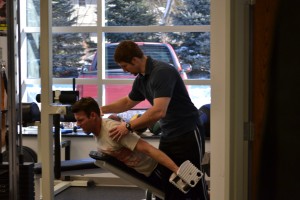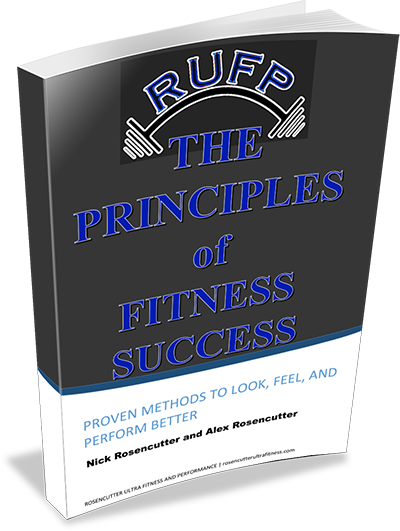Dat Dere IT Band Thing?
First, lets briefly look at what this band is. The Iliotibial band is a dense band of tissue that runs from the top of the iliac crest down to the tibial tubercle below the knee (just look at the name: ilium to tibia). The superior fibers of the glute max, the glute medius and the tensor fascia latae (tfl) all insert into this band and control the tension that is in the band. The band then runs down to the tibial tubercle while covering the majority of the vastus lateralis, the most lateral quad muscle. It functions to provide stability to the lateral portion of the pelvis, thigh and patella (it provides support so our patella doesn’t fly sideways when we step). Every time we take a step, whether walking, running or whatever it is you like to do, these abductor muscles just mentioned, along with the rest of the band, provide support to the pelvis to prevent adduction and pelvic tilt. With any imbalances or movement dysfunction with gait, problems are likely to occur with this whole lateral region. We can go all the way up into the obliques and higher or lower if we want to get real in depth. This lateral hip and thigh is part of a lateral line of fascia that travels the length of the body from head to toe. For the purposes of this article, we shall stick with this particular region.

- TFL or glute are angry: actually overactive, stiff or a combination of the two due to overuse, movement dysfunction or a certain prolonged posture, etc. When this is the case, they will tense up the band (especially tfl, just look at the name: tensor fascia lata) and the band will pull all the way down to the lateral knee. Hello knee pain! In this case, some tissue work will usually help to release them and in turn, the band tension. If a synergist or antagonist to these muscles is not firing properly or is weak, that will need to be taken care of as well or you will keep returning to square one. Some examples: Glute med may be weak so tfl is overactive; even though they both have attachments to the band, the tfl would tense up the band when overactive, especially the anterior portion. The opposite adductors may be weak or inhibited, so our abductors on this side are overactive (ab and adductors work together to stabilize the pelvis in single leg stance). Looking lower down the lateral line, the peroneals (muscles on the lateral lower leg) may be misfiring or weak, causing the part of the lateral line in discussion to be overactive. Rib position, oblique function, breathing and multiple other things will need to be evaluated as well as they can all have effects. These are just a few examples to look at. Bottom line here: Some tissue work is usually beneficial here.
- TFL or glute and/or the entire band are out of normal resting position due to pelvic rotation, tilt or shift. When this is the case, the pelvis needs to be returned to neutral in order to get things back to normal. While tissue work on these muscles may help in certain cases, its not always the case. For example, if the left side of the pelvis is tilted inferiorly, the right side will be tilted superiorly and the entire right lateral hip and thigh will be on stretch. It may feel “tight” or painful because of the constant stress that is there. In this case, you have to get that pelvis back to neutral to clean things up (which ironically might involve working on the left lateral side) This is going to require specific stability and control exercises to make things right. Rollling or stretching this side already being pulled would make things worse.
- With any of these scenarios, the vastus lateralis and IT band can get caught on each other and the IT can compress the lateralis muscle. When these tissues are healthy, they should be able to slide freely and move independently of one another. In this case, some foam rolling (or hands on work is even better) along this lateral region can be beneficial. The difference is, we are focusing on hitting the vastus lateralis and getting it to move relatively to the IT band and just to relax in general. Instead of just blindly “rolling the IT band,” we are focusing on affecting this specific muscle and its relative motion with the band.
- If something such as running gait or squat technique is faulty, then that will need to be cleaned up to prevent issues from coming back. You can work on this tissue until the cows come home but if you keep returning to your faulty movement patterns, your problems will surely return. Shift to one side when you squat? Try some single leg and offset work to fix your movement there. Favor one side and have pelvic instability when you run? Get stronger, develop some stability, learn some better running technique then come back to running.
 (Repost from July 2013)
(Repost from July 2013)

